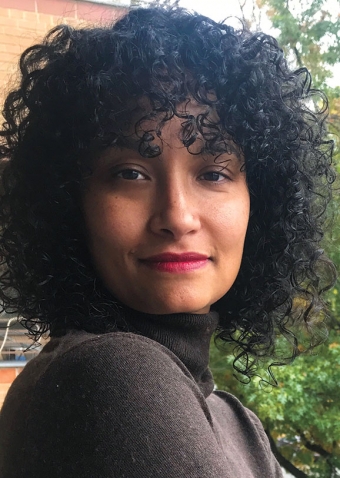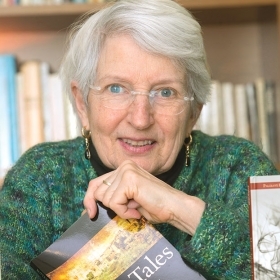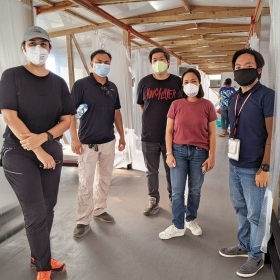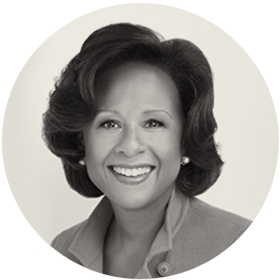Photo by Adam Kurnitz
“Tragedy seems to be the way, in this country, that we acknowledge something wrong is going on.” What Jamila Wignot ’00 says could apply to the present moment, but she’s referring to the year 1911, when a fire roared through the Triangle Shirtwaist Factory in Manhattan, killing over a hundred garment workers because protections we now take for granted—fire exits, for example—weren’t required by law. A documentary about the fire aired on PBS in 2011 as part of the American Experience series; it was Jamila’s solo directorial debut.
Today, Jamila remains passionate about the opportunity the film provided to highlight the American labor movement. “Forty thousand women took to the streets of New York for a while, across class lines!” exclaims Jamila. “This massive movement was effectively led by teenage girls who were out there fighting for human rights, and this eventually overhauled every industry in New York state.”
Jamila is well-versed in history, and, upon arriving at Wellesley in 1996, she thought she was going to major in the subject. Fate intervened: During her senior year, she took a film class which led to an internship at Blackside, the production company known for creating the famed TV series Eyes on the Prize, about the civil rights movement. To Jamila, whose dad is white and from Massachusetts and whose mom is from Somalia, it meant a lot to see offices filled with filmmakers of color. “It was just … wow! I knew I wanted to be in this world,” she says.
Jamila went on to produce and direct, eventually landing a job with Henry Louis Gates, Jr., a prominent intellectual and professor at Harvard. You may have watched a centerpiece of their collaboration: The Emmy-award winning documentary series The African Americans: Many Rivers to Cross, which Jamila helped direct in 2013. In discussing the last episode of the series, which focuses on the years after the American Civil War, Jamila notes how significant it was that the show’s narration didn’t characterize the formerly enslaved only as victims of tragedy. “Black people still fell in love and built these lives and communities,” she says. Expressing that through documentary filmmaking means looking at Blackness, as Jamila explains, “outside of the lens of whiteness.” It also means acknowledging how present the past is. While directing Many Rivers to Cross, for example, Jamila filmed at a cabin in South Carolina where formerly enslaved people lived after the Civil War; the furniture and wallpaper that their descendants had decorated with remain semi-intact. “It was haunting,” says Jamila. “During one moment of filming, we had everyone just sort of stop talking and sit in this silence. There was a total collapse of time.”
Jamila adds that she is selective, especially at this point in her career, about the projects she chooses to work on. “What do I want? What am I trying to say? Who do I want to spend my time with?” are questions she regularly asks herself. At the moment, she’s directing a documentary about Alvin Ailey, who, in 1958, founded New York City’s Alvin Ailey American Dance Theater. Though known as an artistic visionary, Ailey also experienced tremendous personal struggle. “He found salvation in dance,” says Jamila. “He was really trying to create a home for people. Dance was working for him as a tool. If you look at photographs of him, you can see, on stage, how he could put all his pieces together. That’s very hopeful for me. If we can find space in what we’re called to do, there is freedom in that.”
Jamila recognizes Ailey’s staunch individuality, along with that of all her documentary subjects, which have ranged from Walt Whitman to Chris Rock. And, she applies that principle of recognition to her family life, too. Jamila lives in Brooklyn, N.Y., with her husband and 4-year-old daughter. During COVID-19, Jamila maintained the same parenting philosophy she always has. She describes how, before giving birth, she had a feeling of possessiveness about her child. And, then, she says, “I held my daughter for the first time, and there was this moment of, ‘You’re not mine, not a “mini-me.” You’re you!’”








We ask that those who engage in Wellesley magazine's online community act with honesty, integrity, and respect. (Remember the honor code, alums?) We reserve the right to remove comments by impersonators or comments that are not civil and relevant to the subject at hand. By posting here, you are permitting Wellesley magazine to edit and republish your comment in all media. Please remember that all posts are public.